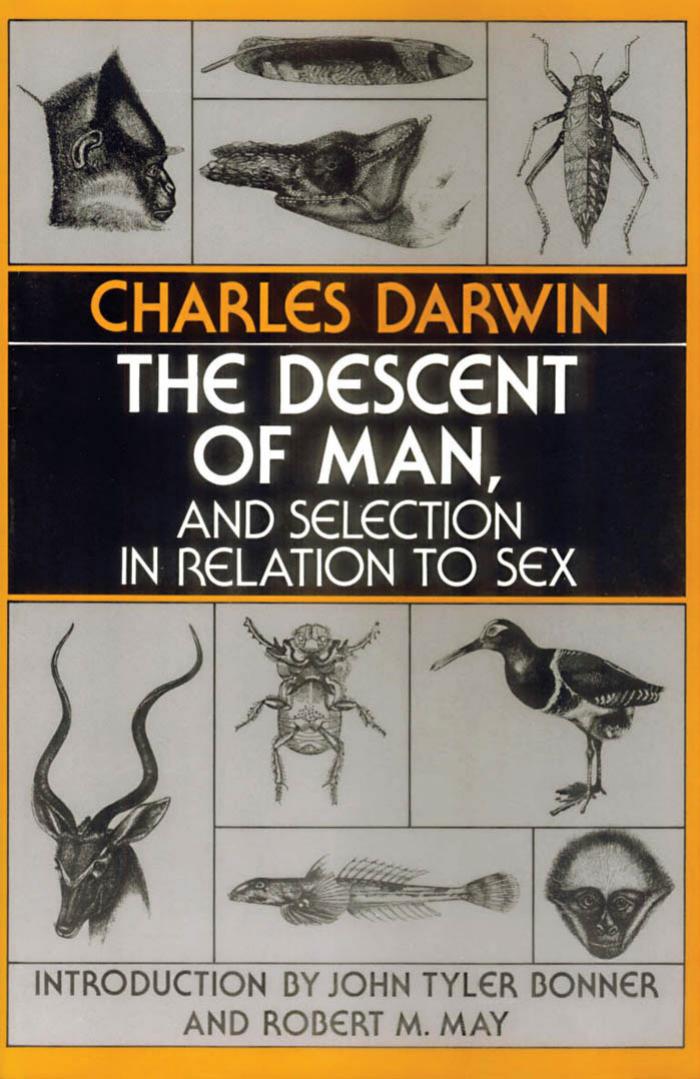The Descent of Man, and Selection in Relation to Sex by Charles Darwin

Author:Charles Darwin [Darwin, Charles]
Language: eng
Format: epub, pdf
Published: 2016-08-07T00:00:00+00:00
The structures as yet referred to are permanent in the male after he has arrived at maturity; but with some Blennies, and in another allied genus (20. Dr. Gunther, 'Catalogue of Fishes,' vol. iii. pp. 221 and 240.), a crest is developed on the head of the male only during the breeding-season, and the body at the same time becomes more brightly-coloured. There can be little doubt that this crest serves as a temporary sexual ornament, for the female does not exhibit a trace of it. In other species of the same genus both sexes possess a crest, and in at least one species neither sex is thus provided. In many of the Chromidae, for instance in Geophagus and especially in Cichla, the males, as I hear from Professor Agassiz (21. See also 'A Journey in Brazil,' by Prof. and Mrs. Agassiz, 1868, p. 220.), have a conspicuous protuberance on the forehead, which is wholly wanting in the females and in the young males. Professor Agassiz adds, "I have often observed these fishes at the time of spawning when the protuberance is largest, and at other seasons when it is totally wanting, and the two sexes shew no difference whatever in the outline of the profile of the head. I never could ascertain that it subserves any special function, and the Indians on the Amazon know nothing about its use." These protuberances resemble, in their periodical appearance, the fleshy carbuncles on the heads of certain birds; but whether they serve as ornaments must remain at present doubtful.
I hear from Professor Agassiz and Dr. Gunther, that the males of those fishes, which differ permanently in colour from the females, often become more brilliant during the breeding-season. This is likewise the case with a multitude of fishes, the sexes of which are identical in colour at all other seasons of the year. The tench, roach, and perch may be given as instances. The male salmon at this season is "marked on the cheeks with orange-coloured stripes, which give it the appearance of a Labrus, and the body partakes of a golden orange tinge. The females are dark in colour, and are commonly called black-fish." (22. Yarrell, 'History of British Fishes,' vol. ii. 1836, pp. 10, 12, 35.) An analogous and even greater change takes place with the Salmo eriox or bull trout; the males of the char (S. umbla) are likewise at this season rather brighter in colour than the females. (23. W. Thompson, in 'Annals and Magazine of Natural History,' vol. vi. 1841, p. 440.) The colours of the pike (Esox reticulatus) of the United States, especially of the male, become, during the breeding-season, exceedingly intense, brilliant, and iridescent. (24. 'The American Agriculturalist,' 1868, p. 100.) Another striking instance out of many is afforded by the male stickleback (Gasterosteus leiurus), which is described by Mr. Warington (25. 'Annals and Mag. of Nat. Hist.' Oct. 1852.), as being then "beautiful beyond description." The back and eyes of the female are simply brown, and the belly white.
Download
The Descent of Man, and Selection in Relation to Sex by Charles Darwin.pdf
This site does not store any files on its server. We only index and link to content provided by other sites. Please contact the content providers to delete copyright contents if any and email us, we'll remove relevant links or contents immediately.
| Cell Biology | Developmental Biology |
| Entomology | Marine Biology |
| Microbiology | Molecular Biology |
| Biostatistics |
Sapiens: A Brief History of Humankind by Yuval Noah Harari(14258)
The Tidewater Tales by John Barth(12610)
Mastermind: How to Think Like Sherlock Holmes by Maria Konnikova(7234)
Do No Harm Stories of Life, Death and Brain Surgery by Henry Marsh(6891)
The Thirst by Nesbo Jo(6836)
Why We Sleep: Unlocking the Power of Sleep and Dreams by Matthew Walker(6620)
Life 3.0: Being Human in the Age of Artificial Intelligence by Tegmark Max(5479)
Sapiens by Yuval Noah Harari(5298)
The Longevity Diet by Valter Longo(5021)
The Body: A Guide for Occupants by Bill Bryson(4978)
The Rules Do Not Apply by Ariel Levy(4870)
The Immortal Life of Henrietta Lacks by Rebecca Skloot(4529)
Animal Frequency by Melissa Alvarez(4399)
Why We Sleep by Matthew Walker(4364)
The Hacking of the American Mind by Robert H. Lustig(4319)
Yoga Anatomy by Kaminoff Leslie(4310)
All Creatures Great and Small by James Herriot(4238)
Double Down (Diary of a Wimpy Kid Book 11) by Jeff Kinney(4210)
Embedded Programming with Modern C++ Cookbook by Igor Viarheichyk(4111)
